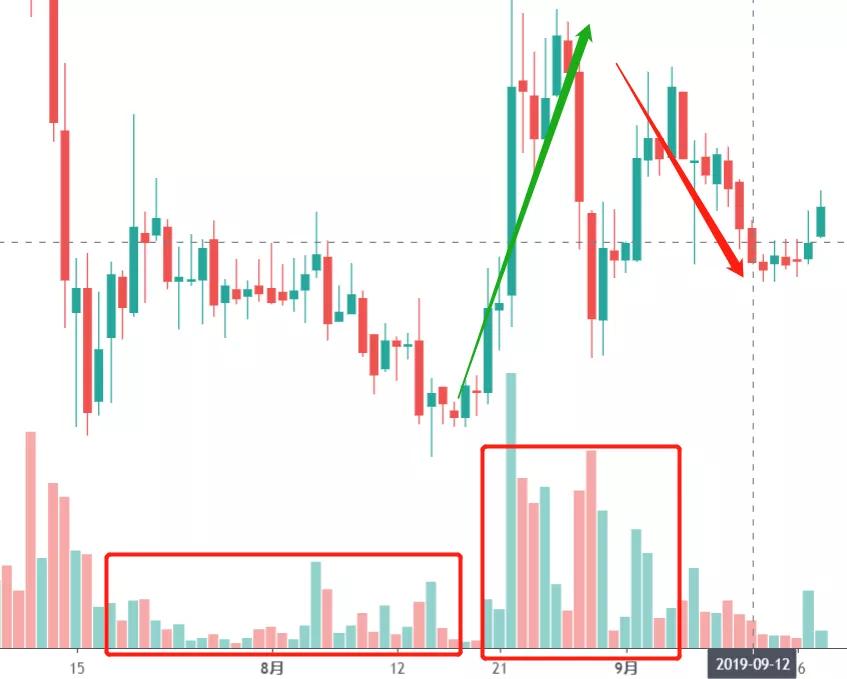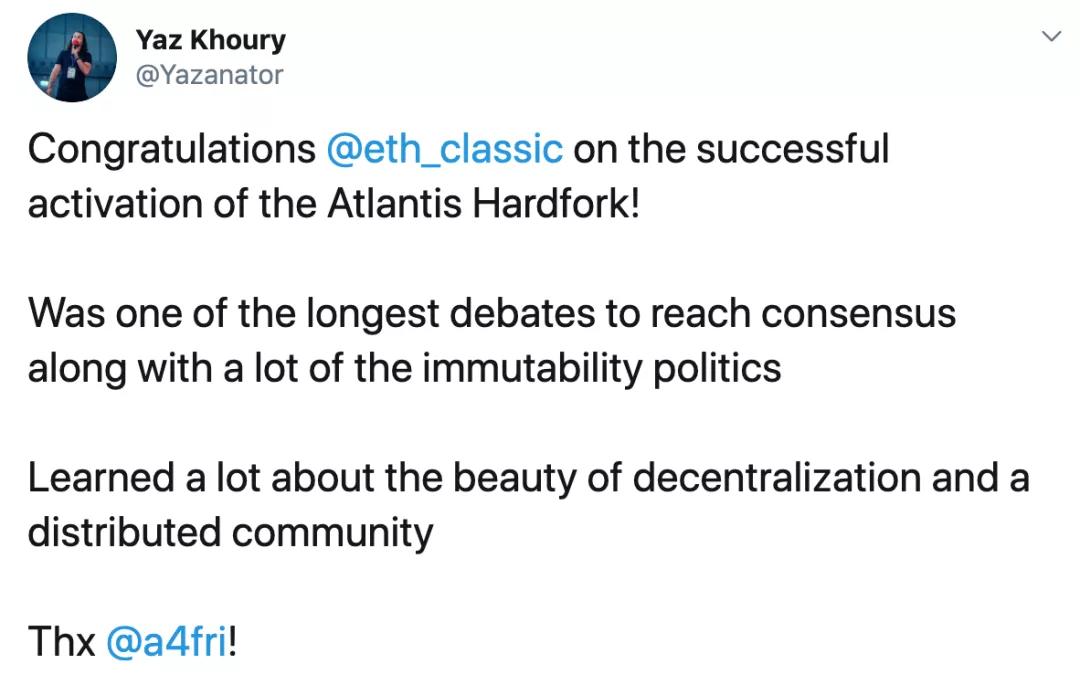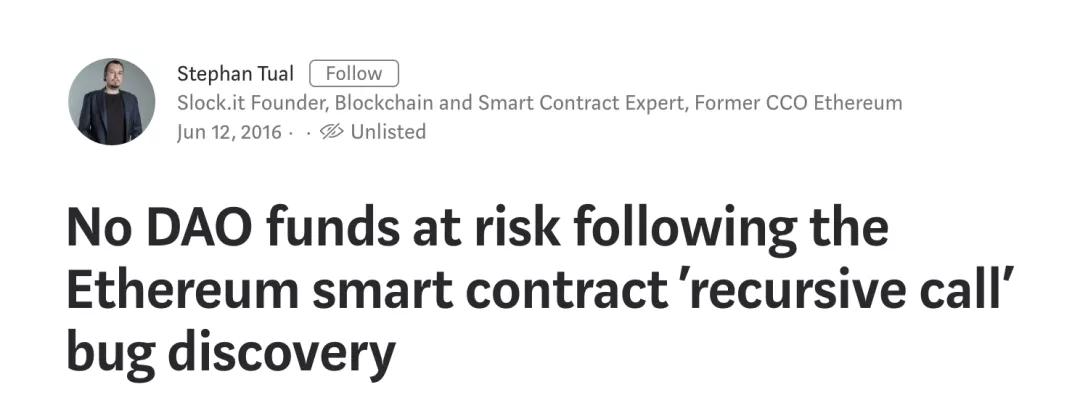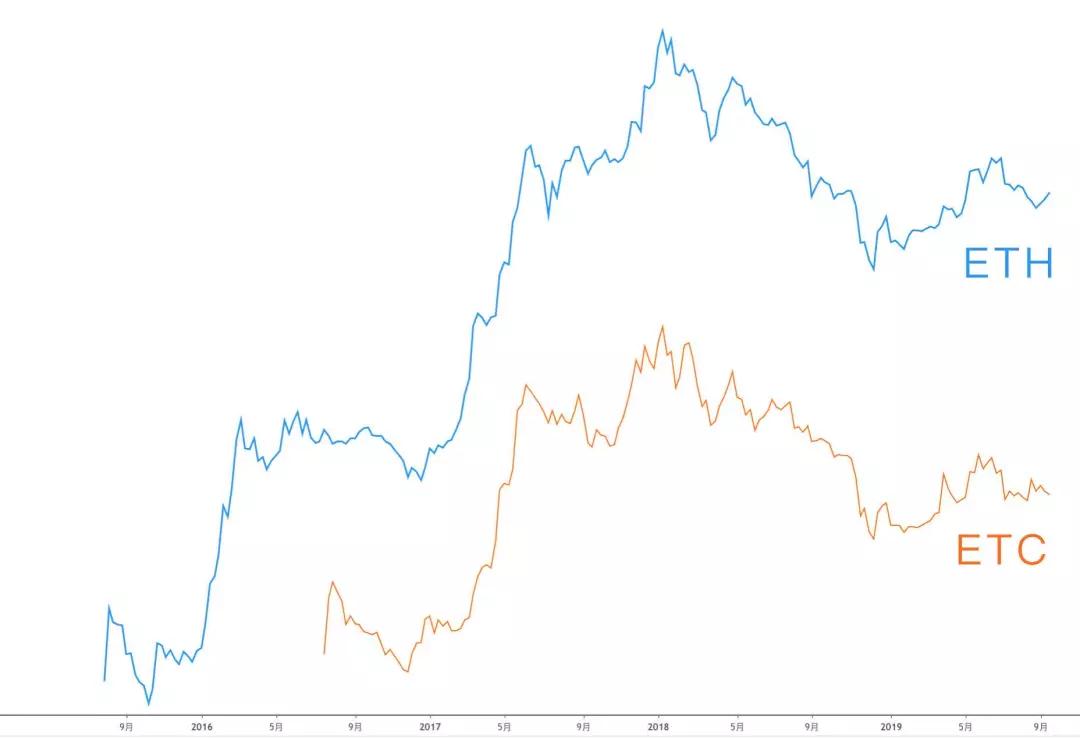ETH rose 30% in half a month, what is the development of ETC living in its shadow?

In just two weeks, ETH has risen more than 30%.
In addition to the intuitive performance of the price, ETH has a variety of benefits. First, V God recently stated in public that the first phase (0 phase) of Ethereum 2.0 will be launched in the first quarter of 2020, which will increase the frequency of blockchain technology transactions and be more secure.
In addition, according to Messari's data, ETH network single-day transaction fee exceeded Bitcoin for the first time, Bitcoin single-day transaction fee was $183,000, and ETH reached $207,000.
The development momentum of ETH is getting better and better. As the original chain of ETH, how is ETC developing?
- Market Weekly | Equity financing market is booming; XRP mid-week rose by nearly 25%
- The collective behavior of governance on the chain: how is power distributed? Why do we need chain governance?
- QKL123 market analysis | Ethereum is already on the road, when will Bitcoin start again? (0923)
"ETC living under the shadow of ETH"
Since the hard fork in 2016, ETC has been living under the shadow of ETH. Although ETC has the name of the original chain, it has no original chain. ETC conducted an Atlantis hard fork last week to show users their strategic plans and ambitions.
At 14:00 pm (UTC time) on September 12, 2019, ETC successfully carried out the Atlantis hard fork at a block height of 8,772,000.
ETC hard fork block
Atlantis first appeared in the Dialogue of the ancient Greek philosopher Plato, indicating that the legendary ancient continent, country or city state with a high degree of civilization development.
After the successful hard-breaking of Atlantis, ETC's engineering engineers plan to hold a core developer conference call on October 24, 2019 to discuss the next hard fork upgrade, code-named Agharta.
Jagota is the legendary kingdom, at the heart of the earth, practicing Utopia's common domination.
From the naming point of view, ETC is not small.
In terms of price, the market has already made a wave of hype for ETC hard forks.
ETC hard fork before and after price changes
In the long run, this hard fork will definitely benefit the development of the ETC public chain. This upgrade has 10 Ethereum Classic Improvement Proposals (ECIP) included.
ETC this improvement proposal
This upgrade is mainly reflected in improved stability, operation code upgrades, pre-compiled contracts, improved pre-compilation contracts for zk-Snarks, delayed difficulty bomb upgrades and enhanced security. The simple summary is that this hard fork increases the functionality and stability of the network. These upgrades make ETC more like ETH.
Of course, this hard fork is not always smooth, and it has also experienced community quarrels and compromises until the majority of people agree and upgrade.
Originally Atlantis plans to complete this summer, but encountered difficulties in adding EIP-170 solutions. EIP-170 was proposed by Vitalik Buterin to set a fixed upper limit on the size of the smart contract code running in a single transaction.
In the end, in the upgrade, according to the consensus of the community, the EIP-170 program was abandoned. This is one of the reasons why Atlantis has achieved 60% of nodes and more than 75% of computing power within 4 hours of the upgrade.
ETC's main exchanges, Coinbase, Poloniex, OKEx, and Binance, have also confirmed with ETC Labs to support Atlantis upgrades.
Afterwards, Yaz Khoury, director of ETC Cooperative Developer Relations, said that he realized the beauty of decentralization and distributed communities in this hard fork.
"The division and birth of ETH and ETC"
If you want to trace the history of ETC, time will have to return to the end of 2013. At that time, there was no Ethereum in the Ethereum Classic (ETC).
Vitalik Buterin created Ethereum and added smart contracts to Ethereum, which allows people to trade in complex ways without having to trust each other, and code to understand how transactions are implemented.
Because of the smart contract, Ethereum is called Blockchain 2.0, and at the same time, Code is Law is also used to describe the writing of contracts. This advantage has also been amplified by the blockchain's believers. Fanatic fans once thought the code was omnipotent, and Ethereum was a disruptive design.
Therefore, Ethereum successfully raised $18 million through lCO.
Ethereum hard forked into Ethereum and Ethereum classics involved another organization "The DAO". The DAO is a DAO organization sponsored by the German startup Slock.it, which raised $150 million in just 28 days and raised Ethereum, which was about 14% of the time.
DAO's full name Decentralized Autonomous Organization, expressed as a decentralized autonomous organization, was also proposed by Eitafang founder Vitalik.
The success of The DAO lies in its application of smart contracts and the promotion of concepts. In the 28 days of The DAO crowdfunding, more than 11,000 people were attracted and hackers were attracted.
Of course, some people have worried about whether the DAO code will be attacked, but in a hot, the voice of worry has not attracted everyone's attention.
Less than a month after The DAO crowdfunding, one of the founders, Stephan Tual, said there was a "recursive call vulnerability" in the code.
After a few days of review, Stephan Tual issued an official statement that The DAO does not have a financial risk. However, it was this inconspicuous review that almost brought the catastrophe to Ethereum.
Stephan Tual issued an official statement that DAO does not have a financial risk
Subsequently, hackers began to exploit the recursive vulnerabilities in the code to remove 3.6 million Ethereum from The DAO's pool of funds, worth $50 million. And the hacker used the second vulnerability to keep the assets that might have been destroyed.
However, due to the system code, the stolen funds will be locked out in the system for 28 days, which leaves valuable time for the community.
The community is considering a variety of options to recover losses, including 51% attacks, soft forks, and hard forks.
In the end, less than 6% of Ethereum holders voted, and 85% of them supported hard forks, which made Ethereum split into two.
It is worth noting that this hard fork is not a problem from Ethereum itself, but only a problem with the application code (The DAO) on Ethereum.
Only the members of the organization happen to have a part of the Ethereum Foundation, and both have common interests.
The code is that the law has become empty talk, and it has been repeated and once again.
On July 20, 2016, the hard fork was successful, and Vitalik chose to stand on the ETH side, indicating that both energy and resources will be used on ETH. But there is no objection to ETC and it is considered an experiment.
Vitalik admits that the reason for not using ETC for ETC is that ETC's social contract, community, and reasons for existence no longer make him feel excited and satisfied.
Those who support ETC think that the code is the law, and the public's interests should not be tied up by the niche.
The contradiction between ETC and ETH has gradually evolved into a confrontation between morality and ideology. The ETH community believes that it has defeated hackers through hard forks. This is a revolutionary victory and is morally dominant. The ETC community believes that community and developer power should not be too large, otherwise the financial system with corruption will not The difference.
A few days later, Poloniex, the world's largest Ethereum exchange, went online with ETC, and then several exchanges followed suit.
After the ETC went online, the contradiction between the ETC community and the ETH community was intensified because of the conflict of interest between the two. The ETC community finally issued an independent declaration, saying that it no longer has any contact with the Ethereum Foundation.
ETH, ETC logarithmic price change
"How is ETC going?"
After dividing into Ethereum (ETH) and Ethereum Classic (ETC), ETC decided to take its own path.
On February 20, 2017, Igor Artamonov set up a company called ETCDEV to help Ethereine's classic smart contract development developers use the tools. Charles Hoskinson, who once worked at Ethereum, hired seven developers from Poland to rewrite the ETC client.
Immediately afterwards, ETC began to change its monetary policy, using Matthew Mazur's ECIP-1017 program. The program has reduced ETC's output per 5 million blocks by 20% and the total circulation is no more than 230 million.
The most important point is that the ETC community hesitates to distrust the PoS consensus mechanism and believes that its algorithm is not secure enough to disable the difficulty bomb. In the near future, the ETH consensus mechanism will transition from PoW to PoS, and the two will be completely separated.
Later, ETC's early supporter Barry Silbert founded ETC Cooperative to help the growth and development of the ETC agreement. DFG founder James Wo also bet on ETC and created ETC Labs to incubate innovative projects on the ETC chain.
This ETC Atlantis hard fork can be compatible with the Spurious Dragon and Byzantium upgrades of the ETH network, and the ETC performance and functions are greatly improved. The DApp on the ETH chain can be seamlessly transplanted to the ETC.
ETC hard forked "more like ETH" is not to confess to ETH, nor to compromise to ETH, but is struggling to catch up. In particular, the ETC community began to encourage miners to move from ETH to ETC.
ETH will launch the Beacon chain (PoS chain) in 2019, and the virtual machine layer will be activated in 2021. Ethereum will be completely transferred from the PoW chain to the PoS chain.
At the beginning of 2019, ETC was attacked by 51% of the "good faith". It must be more aware of the consensus mechanism and the importance of the algorithm. Vitalik said after the 51% power attack on ETC, ETH turned to PoS is the right choice.
Both ETC and ETH currently use the same mining algorithm, and when ETH turns to PoS, most of the miners will be abandoned. It may be that time, it is the time for the two to win or lose.
Author
Edit is not bright
Operating a small mercenary
We will continue to update Blocking; if you have any questions or suggestions, please contact us!
Was this article helpful?
93 out of 132 found this helpful
Related articles
- Forget about NVT and currency exchange equations, this has a new model for crypto asset valuation.
- Is traditional bank and DeFi isolated from each other? No, Linen allows non-encrypted users to borrow on encrypted assets.
- Zhu Min: Libra may bring 4 kinds of subversion, 7 opportunities
- Starting to sell 8 bitcoins in 2 hours, is Bakkt’s bull market myth gone?
- Bakkt officially launched, taking stock of the advantages of Bakkt, why is the bull market still not coming?
- Bakkt is officially open for trading, there are 5 things you don't know.
- Dutch oil and gas giant Dietmann uses blockchain platform to simplify the deployment of projects on the chain










